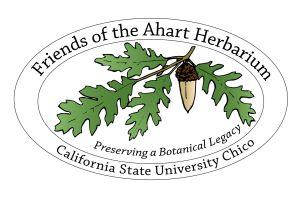Questionably plants, definitely native, unquestionably important, and usually small, lichens are an overlooked but present link in most ecosystems. Tolerant and intolerant of locales that are arid and inundated, polluted and pristine, responses to environmental stresses vary widely by species. There are reported to be slightly less than 5000 species in 646 genera in North America and more than 1600 species in California, yet few people are able to place names on even the most common lichens, which means that an essential component of most natural resource inventories is lacking. Opportunities to learn about identifying lichens are infrequent, although the basic characters used in identification can easily be learned in a day.
This one-day workshop will focus on identifying the lichens of the lower Sierra Nevada foothills to genus. The morning will be spent covering lichen basics – anatomy, morphology, and reproduction of lichens. Lunch will be spent in the field, with lichens, and possibly some hands-on collecting. Afternoon will be back in the lab for guided exploration, using dissecting ‘scopes, reference materials, chemical spot tests, and vouchers and a key provided by the instructor. Please bring dissecting tools, a hand lens, a thumb drive, and lunch. Participants will benefit more from the workshop if they are experienced with using dichotomous keys.
The workshop will be led by Tom Carlberg. Tom has a degree in Botany from Humboldt State University. He has been a cryptogamic botanist for 15 years, working for the Forest Service, private contractors, and non-profit organizations. His current special interest is ageing lichens that grow on the leaves of evergreen vascular plants. He is the past Editor of the Bulletin of the California Lichen Society (CALS), and a member of the Society’s Conservation Committee. In addition to CALS, he also belongs to the American Bryological and Lichenological Society and the British Lichen Society.

